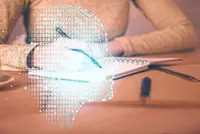We might complain about over-reliance on ChatGPT and AI but forget to ask: What compels students to use it in the first place? — 123rf
Last week I caught up with an old friend and we talked about changes in education since we were at school.
A memorable line of his as we started our degree was: “Just a few months ago we had to ask permission to go to the washroom. Now we’re expected to know what we want to do for the rest of our lives.”
We’d moved, seemingly overnight, from a regimented environment to being told we were independent adults, expected to make our own decisions and manage our learning. For years, school taught us what to think: memorise formulas, recall historic dates, and get the right answer. One of my favourite teachers pushed back on this by saying, “How you think is more important than racing to find the right answer because, often, there’s no single correct answer.”
Yet the pressure to find the “right” answer never really goes away.
Exams, assignments, grades, and league tables ensure many education systems prioritise correctness over curiosity.
Most teachers strive to encourage curiosity and critical thinking because they know it matters. But they work in systems that reward standardisation and performance metrics, and this can create an obvious pressure.
When mistakes are penalised and stakes are high, students avoid taking risks. Some tell me they don’t ask questions in class for fear of embarrassment. No one is born with this fear.
Is it, then, really a surprise that students turn to artificial intelligence (AI) to find answers? We might complain about the over- reliance on ChatGPT but forget to ask: What compels students to use it in the first place?
AI isn’t going anywhere. It’s evolving fast and is already part of work, learning, and life. We can blame it or try to restrict it, but that’s like shouting at the tide to turn. That said, it’s sensible to say AI should aid learning, not replace thinking. But policing these tools alone misses an important point.
If students see education as a race to the right answer, they’ll reach for shortcuts. The problem isn’t the tool; it’s how we shape expectations about learning.
Instead of teaching students what to think, we need to encourage exploration, questioning, and discussion. Reflection and curiosity are essential for developing minds.
Of course, this isn’t just a teacher’s responsibility. It’s shared by schools, policymakers, parents, mentors, and students themselves. How can we build a culture that values the process of learning and not just the result?
This approach doesn’t just help in school; it can help students adapt to a world of increasing complexity and change.
A few years ago, I attended training in emotion-focused therapy and was inspired by the facilitator’s approach. He’d ask a question and go around the group making sure everyone shared their thoughts. He wasn’t forcing participation but explained that while he might be the expert, others would likely see something he hadn’t considered.
“There are different ways to approach many problems,” he said, “and it’s useful to learn how each of us thinks about different scenarios.”
We often learn best when we wrestle with challenging questions, talk them through, or explain them in our own words. It’s the exploration that cements understanding.
This lies at the heart of respected education systems. Finland is frequently cited for its emphasis on exploration and problem- solving over rote memorisation and standardised testing.
Teachers there act as facilitators guiding students through inquiry, and the curriculum values discussion, projects, and applying knowledge in real contexts. Students learn there isn’t always one “correct” answer, freeing them from the pressure of having to find a single resolution.
Of course, what works in one country might not suit another. Culture matters, but the principle is clear: If we want students to thrive in an age of AI and rapid change, they need more than information. They need contextual intelligence – the ability to apply knowledge flexibly, adapt to new situations, and think critically.
It also helps to consider motivation. Richard Koestner, a psychology professor in Canada, has researched human motivation for 25 years. He describes how learning well depends on exploration, playfulness, and curiosity without feeling boxed in or under pressure.
As educators, parents, mentors, and leaders, it’s worth reflecting on how we guide young people and the expectations we set. We might ask ourselves:
> How do we encourage them to ask questions without fear of judgement?
> How do we reward curiosity instead of just correctness?
> How do we model admitting we don’t know everything and show how to handle that?
> How do we create spaces where mistakes are seen as learning opportunities, not failures?
We can say it’s OK to make mistakes and not have all the right answers, but in my experience working with young people, they often feel that’s not the real message they’re receiving.
If they feel they must get it right the first time, maybe our focus is best placed on understanding what’s creating that pressure and how we can all help change it.







